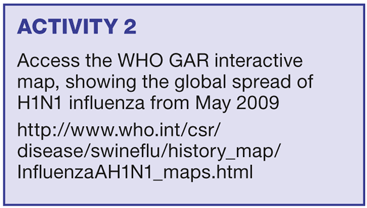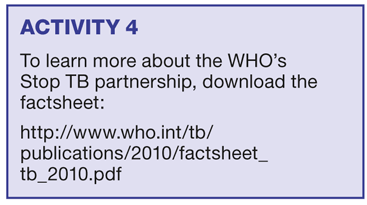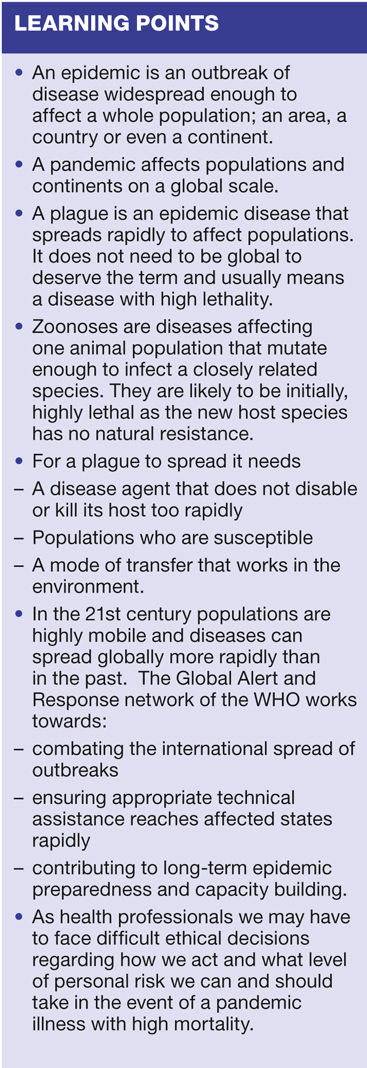Plagues, pestilence and pandemics: Deadly diseases and humanity
Dr Mary Lowth
Dr Mary Lowth
MA MB BChir FRCGP
GP and MRCGP Examiner
From SARS to H1N1, the word 'pandemic' sends people rushing to the surgery, seeking knowledge and protection. We try to explain the theories for why they happen, and what they mean for our patients and ourselves
In recent years the term pandemic has returned. From SARS to H1N1 influenza (swine flu) the word sends people rushing to the surgery, seeking knowledge and protection. It is important, faced with such questions and challenges, to understand what a pandemic is and how it needs to be tackled.
The terms plague, epidemic and pandemic are used almost interchangeably in the media, but mean different things. An epidemic is generally held to be an outbreak of disease widespread enough to affect a whole population - an area, a country or even a continent. The edges blur with the term pandemic, which crosses into other populations and continents on a global scale. The term outbreak is usually synonymous with epidemic.
A plague is an epidemic disease that spreads rapidly to affect populations. It does not need to be global to deserve the term. It usually means a disease with high lethality, and historically has been used to apply to bubonic plague, which has swept the world several times.
As for pestilence, this is either, depending on your beliefs and interests, one of the Four Horsemen of the Apocalypse, a Marvels comic super-villain or a Dutch heavy metal group. We don't use it quite so often!
PLAGUES IN HISTORY
We can learn from the past. Scientists have looked to history to model how pandemics might progress. Several major plagues were documented in the ancient world, and they tell us something about how diseases and populations interact.
The most ancient in our written history, the Plagues of Pharaoh,1 were (according to the Book of Exodus) visited upon Pharaoh when he refused to allow the Hebrew slaves to leave Egypt. Several were infestations rather than infections (an infestation of locusts is still referred to as a plague to this day), but the plague of pestilence which killed all the cattle was an infectious disease which could easily have been rinderpest.2 The plague of boils was a festering, contagious, skin eruption which could have been impetigo, and some historians have suggested that the final plague, the death of the firstborn, might have been due to infected food which was given selectively to the firstborn when times were lean. The Plagues of Pharaoh show the fear such calamitous events inspire, sweeping innocent and guilty aside together. They give us cultural references but perhaps tell us little more, as they were essentially local events.
The Plague of Athens in 430BC was an outbreak of typhoid which killed a quarter of Athenians over four years. It fatally weakened Athens, but killed so quickly that it had little chance to spread beyond the city. The Antonine Plague, which killed five million in Italy in 165AD but reached no further, was probably smallpox. In each case the disease was rapidly disabling enough to be self limiting, telling us that any infection which disables and kills rapidly does not have the chance to move to a new population and shuts itself down.
The Plague of Justinian in the 5th century, on the other hand, reached further. It was probably bubonic plague, a bacterial infection causing death by septicaemia. It wiped out up to 50% of the world's population in 150 years. History does not record how it came to a close, although it may simply have run out of susceptible victims. Highly infectious with a high mortality, victims nevertheless were infectious before they were disabled, and infected individuals fleeing death unwittingly brought it with them. More importantly, however, the disease was spread by the fleas on rats. It was this combination of animal reservoir and the lack of hygiene that allowed rats and fleas to multiply, rather than person-to-person transfer, that was responsible for the devastating worldwide consequences.
Interestingly, bubonic plague did not return on a large scale for 800 years. There was plague in the Middle East at the time of the Crusades, but for reasons that are unclear there seems to have been no repeat pandemic until the Black Death. This reached Europe in 1348 and killed a third of Europe's population, 50% of England's, and 75 million people worldwide. It did not settle down for centuries. The 1348 epidemic was the first of a more than 100 European plague epidemics that ran in two to five-year cycles till 1480. The Great Plague of 1665-66 was the last major outbreak and killed approximately 100,000, 20% of London's population.
Bubonic plague is largely preventable with good (anti-rat) public health measures and, now, is treatable with antibiotics. It shows us how a disease can move through a population and can keep coming in pandemic waves, seeking out the non-immune, until we find a solution. In the case of 1666 plague, the Great Fire of London destroyed the insanitary dwellings, and with them the rats that were allowing the disease to fester on. The city was destroyed but the people survived.
WHAT A 'GOOD' PLAGUE NEEDS
Disease and epidemics occur as a result of the interaction of infectious agent, host, and environment. Agents cause the disease, hosts are susceptible to it, and environmental conditions permit host exposure to, and transfer of, the agent.
For a plague to spread it needs:
1. A disease agent that does not disable or kill its host too rapidly
2. Populations who are susceptible
3. A mode of transfer that works in the environment.
An understanding of these interactions is crucial to determine the best approach to prevent or control the continuing spread of an epidemic.
Some organisms will never make 'good' epidemics. They may not be infectious enough e.g. hepatitis B which is defeated due to its mechanism of spread (point 3). It requires mingling of body fluid to spread, although it has the potential to become an epidemic among drug users who share needles and thus overcome this barrier. Some are limited by point 3 because they are confined to tropical ecosystems, where their only transmission vector lives (e.g. yellow fever, malaria), and do not spread by person-to-person transmission.
Others are simply too rapidly lethal to be successful. Lassa fever, a viral haemorrhagic disease, has almost 100%, rapid mortality. It may cause a local plague as it is highly infectious, but, as it is rapidly lethal and confined to certain temperature and humidity zones, it tends to be rapidly shut down, first by its own lethality and secondly by its lack of tolerance of varied geo-zones. It fails on two counts: the host does not live long enough to transmit it (point 1) and the mode of transit is confined to specific small zones (point 3).
Influenza, on the other hand, passes all three challenges. It is easy to transmit, of low mortality and is able to survive in all ecological zones and, indeed, alone on hard surfaces for several hours. Thus, whenever the virus emerges with a new immunogenic identity, the conditions are met for pandemic spread.
TACKLING PANDEMICS
To contain disease we can strike at several points:
Reducing the susceptibility of individuals - through immunisation, through improved nutrition which improves natural resistance, and through our immune systems gradually evolving resistance to the disease itself.
Western populations have, for example, evolved some resistance to measles over the eight hundred years since it began, whereas the Amazonian Indians, who had never been exposed, died of the disease in large numbers when missionaries brought it into the jungle.
Reducing transmission at the setting - through hygiene control, wearing of barriers such as masks and gloves, and control of transmission vectors such as mosquitos or contaminated water.
There is some evidence that monks at the time of the Black Death realised that burning infected bedding, which got rid of the disease carrier, the flea, limited the spread of disease. Times of war, when people are made refugees and live in close, insanitary conditions, mean that organisms like cholera have the potential for rapid outbreaks. If we reduce overcrowding and offer safe water and sanitation, cholera spread is disabled far better than if we try to immunise - especially as we have only a low efficacy vaccine.
Reducing spread - through limiting the movement of exposed or infected individuals. This method was famously employed during the Black Death when the infected were boarded into their houses until they died or got better. The Derbyshire village of Eyam locked down and closed its borders, allowing no one in or out until its infection was spent.
BIOLOGICAL THEORY OF DISEASE EVOLUTION
Why are some infectious diseases deadly? Are they the very cleverest organisms, or are they the fools in the evolutionary race for survival of the fittest? To answer these questions we may need to look at the world from a disease's point of view.
Darwin suggested that all biological organisms are simply vehicles created by genes to assist their DNA to replicate and spread. You and I are irrelevant, except as a means for our genes to survive and duplicate. Everything is constantly evolving and improving to allow its DNA, rather than its individuals, to survive. Organisms do this through the minute mutations that occur between generations. Some are useful, some are not. The useful ones help the organisms live longer or more healthily, so they can replicate more frequently and effectively. Hence these tend to increase in number.
Human beings evolve slowly. Organisms that replicate fast, like bacteria, have many millions of shots at varying their DNA to every one of our efforts. Pathogens and their DNA can change fast - much faster than we can. Diseases are caused by organisms that penetrate our defences and multiply within the human body. Our bodies are the tool the organism uses to multiply and spread. It is a quest for world domination shared by every infective bug from bubonic plague to the common cold.
The ideal situation from the point of view of the disease is that it multiplies in us without impairing our survival (at least not till the last minute), jumping from one person to the next easily, and needing only a small loading dose and an easy transmission method in order to spread. Many organisms manage this very well. Influenza spreads extremely easily through coughing and sneezing, and is infectious well before it is symptomatic. Others, like Lassa fever, jump rapidly from one host to the next, but wastefully leave their brothers caught up in our destruction in their wake.
Of course our bodies do fight foreign proteins, and a disease may be wiped out before it gets a chance to multiply - sometimes before it gets a chance to get in. Diseases must therefore adapt to bypass the host's immunity, or develop a faster way to spread, such as a toxin that breaks down cell walls more rapidly. In doing this, however, it can become more toxic, and if it goes too far down this route, it will become rapidly lethal and the host will die too soon.
WHERE DO NEW DISEASES COME FROM?
New diseases generally come from old diseases. Sometimes old diseases change slightly - e.g. the influenza virus changes its outer coating every year. Sometimes an organism that affects one animal population mutates enough to infect a closely related species. This is more likely if the disease organism has been heavily exposed to the new species and has thus had multiple chances to try and make a go of things in a new host.
These diseases - called zoonoses - are likely to be, initially, highly lethal as the new host species has no natural resistance. HIV is believed to have mutated from a monkey virus (simian immunodeficiency virus, SIV) that was well adapted to monkeys and caused little harm. Some people have suggested that the central African tradition of eating monkeys may have provided the virus with the opportunity to mutate. Canine distemper and measles evolved from the now eradicated cattle disease, rinderpest, probably in the 11th century, once cattle, dogs and people began to live in close quarters. This makes measles relatively new as a human disease. As you might expect of a disease new to human populations, it can be dangerous. Nine hundred years is long enough for us to have some defence, but not quite long enough for safety.
Eventually species adapt to one another. Diseases and hosts adapt to form a more symbiotic relationship, which benefits both. But there will always be more pathogens and more mutations, so the cycle will always go on.
MANAGING PANDEMICS: WHO3
Managing a pandemic is a problem for the world, not just individual populations. When a new disease appears it is the role of the World Health Organization (WHO) to monitor the situation. They define and declare the presence of outbreaks, epidemics and pandemics, and use a global alert system to mobilise Member States' responses. The Global Alert and Response3 network (GAR) works towards:
- combating the international spread of outbreaks
- ensuring appropriate technical assistance reaches affected states rapidly
- contributing to long-term epidemic preparedness and capacity building.
PANDEMIC PLANNING
The recent outbreak of pandemic flu may have seemed a lot of fuss over nothing. H1N1 was not as lethal as anticipated and, although it spread around the world despite attempts to contain it by limiting travel by those who were unwell, it did not lead to mortality on a grand scale... but it could have done! Had the virus mutated towards lethality it could have been a very different story.
Many practice nurses will have been involved in pandemic planning as H1N1 approached. This consisted largely of logistical planning, with a pooling of information about health workers and health care support workers. Local plans were created around an assumption that a high percentage of the workforce would be either sick or caring for sick family members. Meanwhile, Tamiflu, an antiviral drug, was rushed to all those with early symptoms in order to try to limit infectivity, and a vaccine was produced quickly and prioritised to front-line health service staff in order to maintain an effective anti-virus workforce.
Some health care workers had a problem with this. There was not enough vaccine for all, and there were fears that H1N1 might be particularly lethal to young people, as was Spanish flu in 1918. Many doctors and nurses felt that 'their' vaccine should be given to their children, who might be more vulnerable. But the pandemic plan was aimed at keeping health care systems functional. One can see both sides of this, and for parents who were also doctors and nurses, it felt a difficult position to be in.
It's also worth remembering that we only know we have a pandemic when we have one. Planners must spot those organisms that have the potential to become a pandemic. Thus pandemic planning can seem like doom mongering when nothing much happens. A few years ago there was real fear that avian flu might combine with H1N1 into something more deadly and traverse the globe on the back of migrating bird populations. It didn't, and one can be cynical about doom mongering, but human beings have a sensible tendency to plan for the worst. Public health experts continue to tell us that it's not a matter of if there will ever be another lethal global pandemic, but when.
WHAT SHOULD WE DO IN A LETHAL PANDEMIC?
This may be a personal as well as professional decision. It is said that when there is an outbreak of Ebola virus in Angola the doctors and nurses go home and lock their doors. While this might sound heartless it is a pragmatic response to a highly contagious virus with an almost 100% mortality.
If patients go to hospital, and doctors treat them, everybody dies. Then there are no doctors and nurses for the diseases that remain when Ebola has worn itself out. If ever we are faced with a pandemic disaster on this level we may have some difficult ethical decisions to face regarding how we act and what level of personal risk we can and should take.
SLOW PANDEMICS
It is worth remembering that not all pandemics sweep the world annually, or dramatically. Some spread slowly and insidiously. We remain in the grip of a global TB pandemic, which WHO estimates infects one third of the world's population. While many of those infected have indolent TB, a million and a half people die of it every year.
TB spreads only after prolonged or close contact, but lingers for a long time in its host and takes advantage of the low immunity caused by poor nutrition and HIV to find large populations in which to spread. Its control remains one of the great public health challenges of our times.
CONCLUSION
Reflecting on diseases and how they have interacted with our ancestors through history can be interesting. It's also reassuring to think that we are descended from the survivors, and as such we carry, if anything, more natural resistance to historical plagues than did those who died in the great pandemics of history.
We cannot, however, be complacent and we must be ready to plan. New diseases can emerge at any time - witness SARS, avian flu and HIV in recent times - and others will come to challenge us. An understanding of why we have pandemic planning and what it is will help us when the next real challenge comes, whenever that is.
REFERENCES
1. Exodus. 9:1-7
2. Institute for Animal Health : www.iah.ac.uk/disease/rinderpest.aspx:
3. World Health Organisation Global Alert and Response http://www.who.int/csr/en/
Related articles
View all Articles






